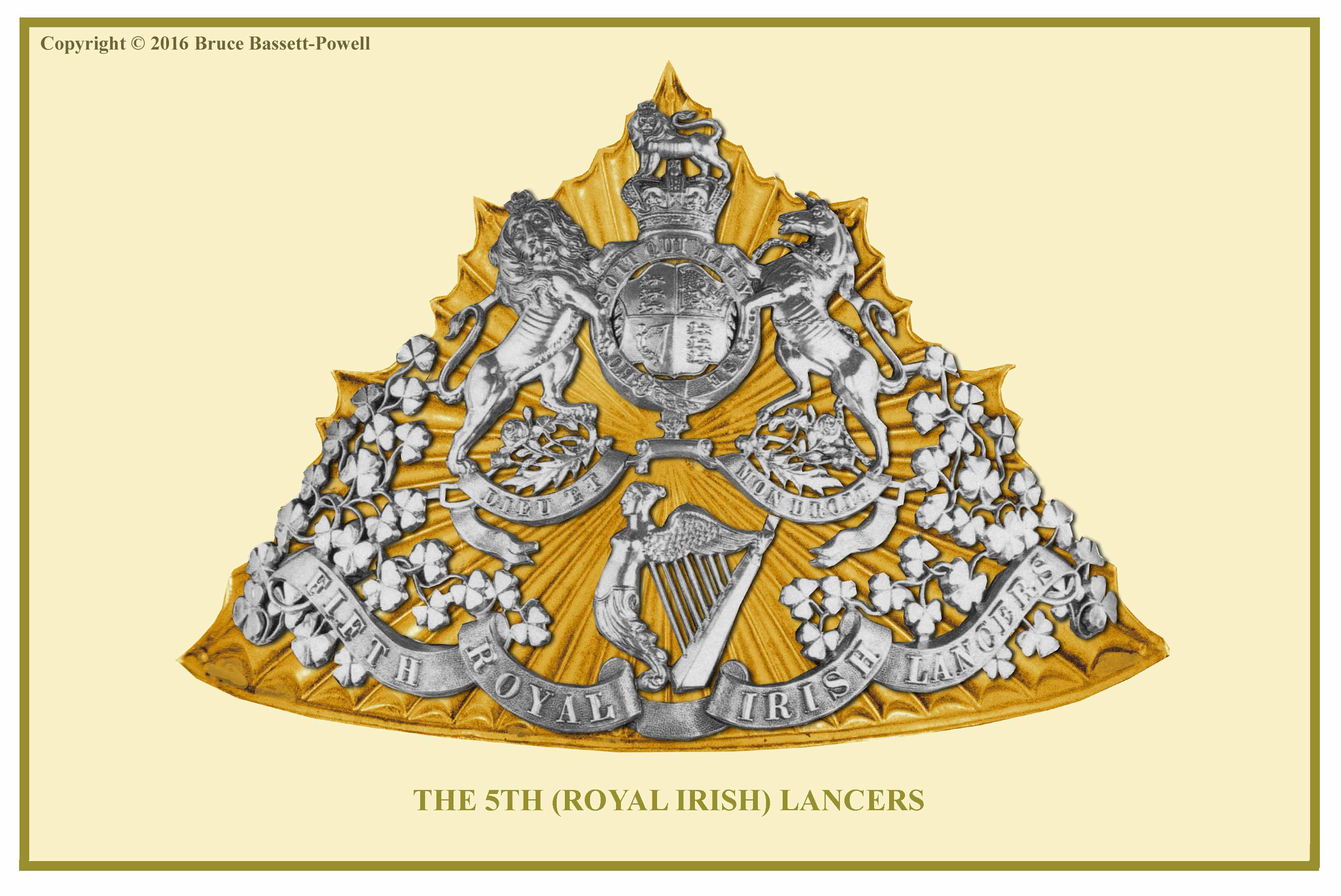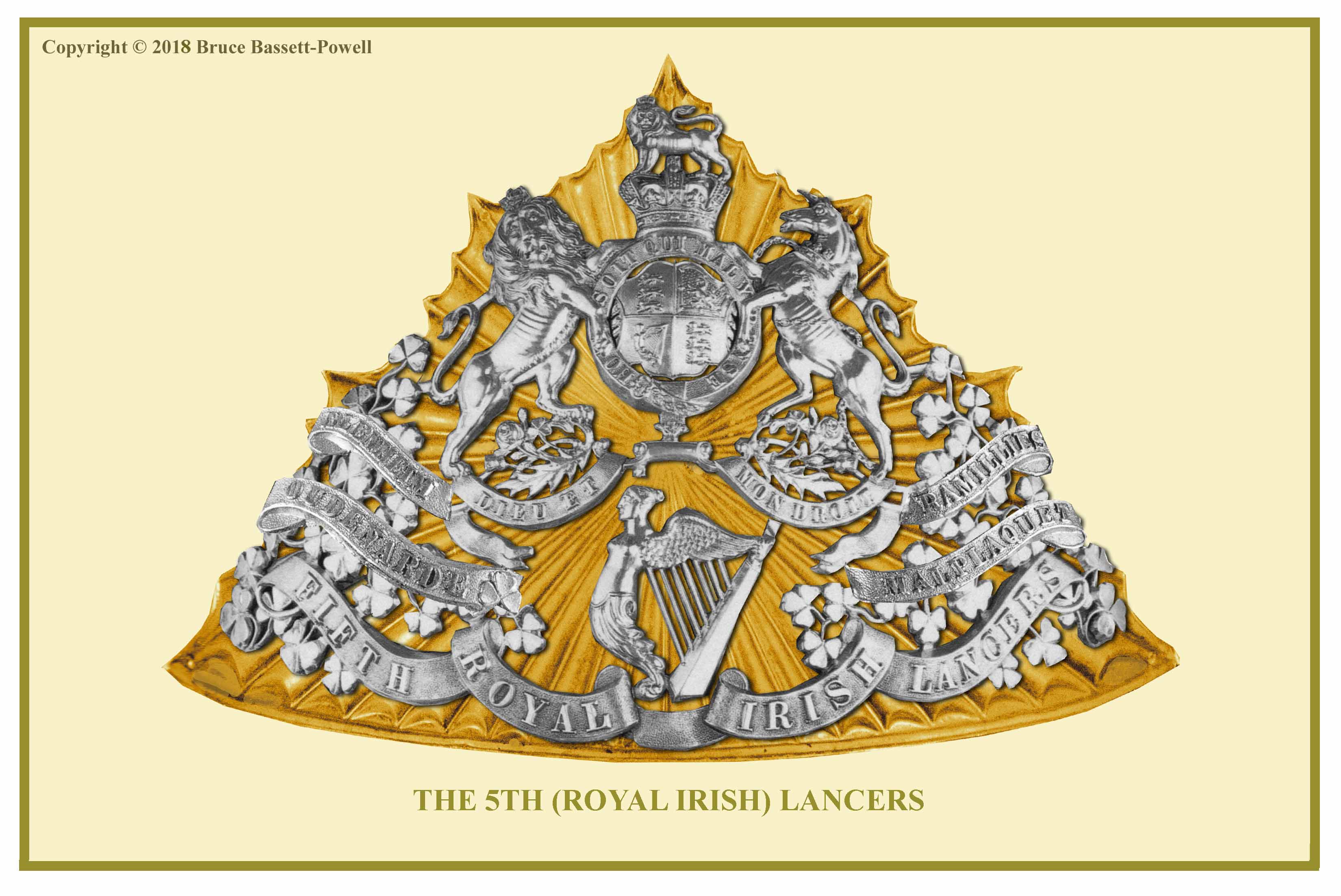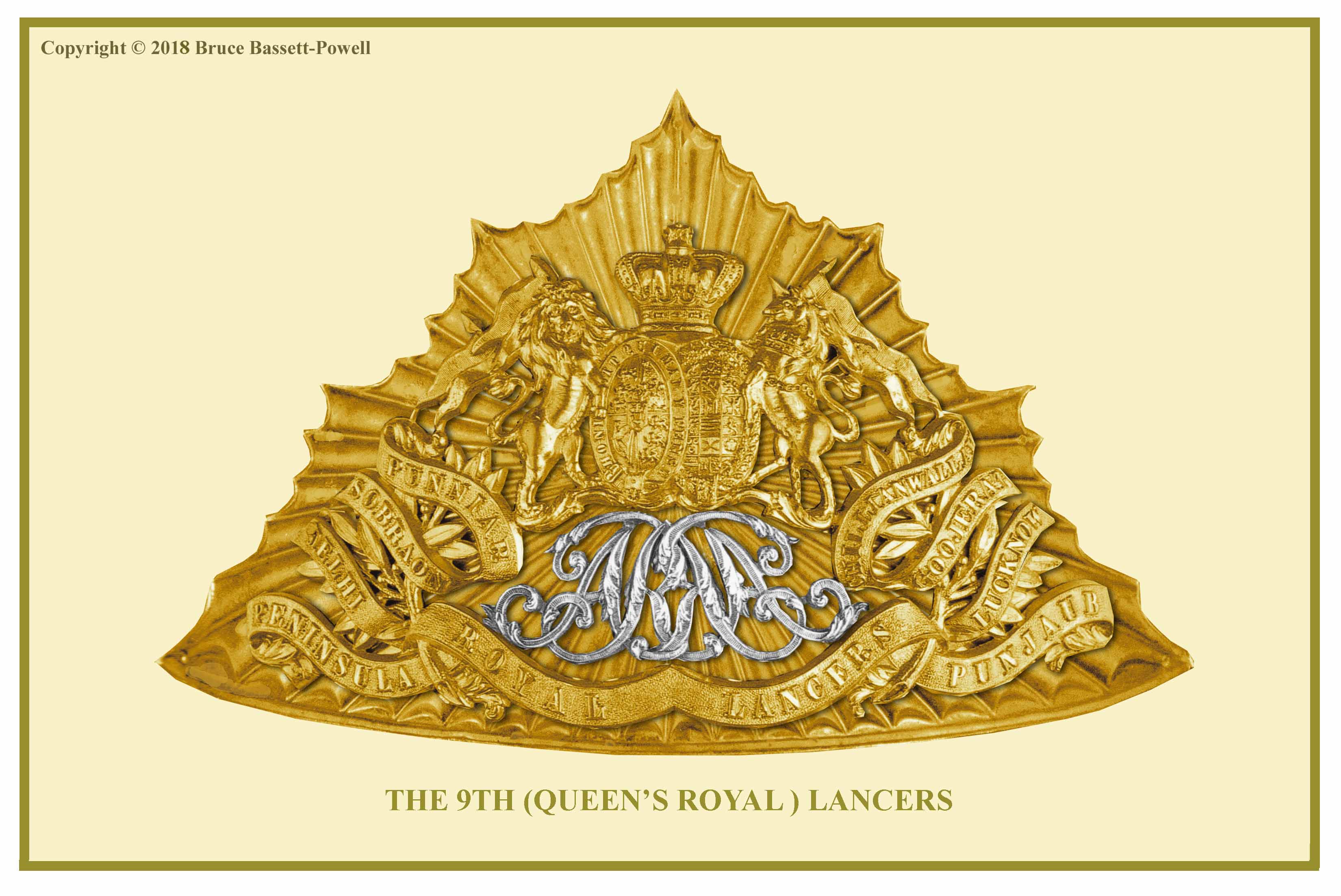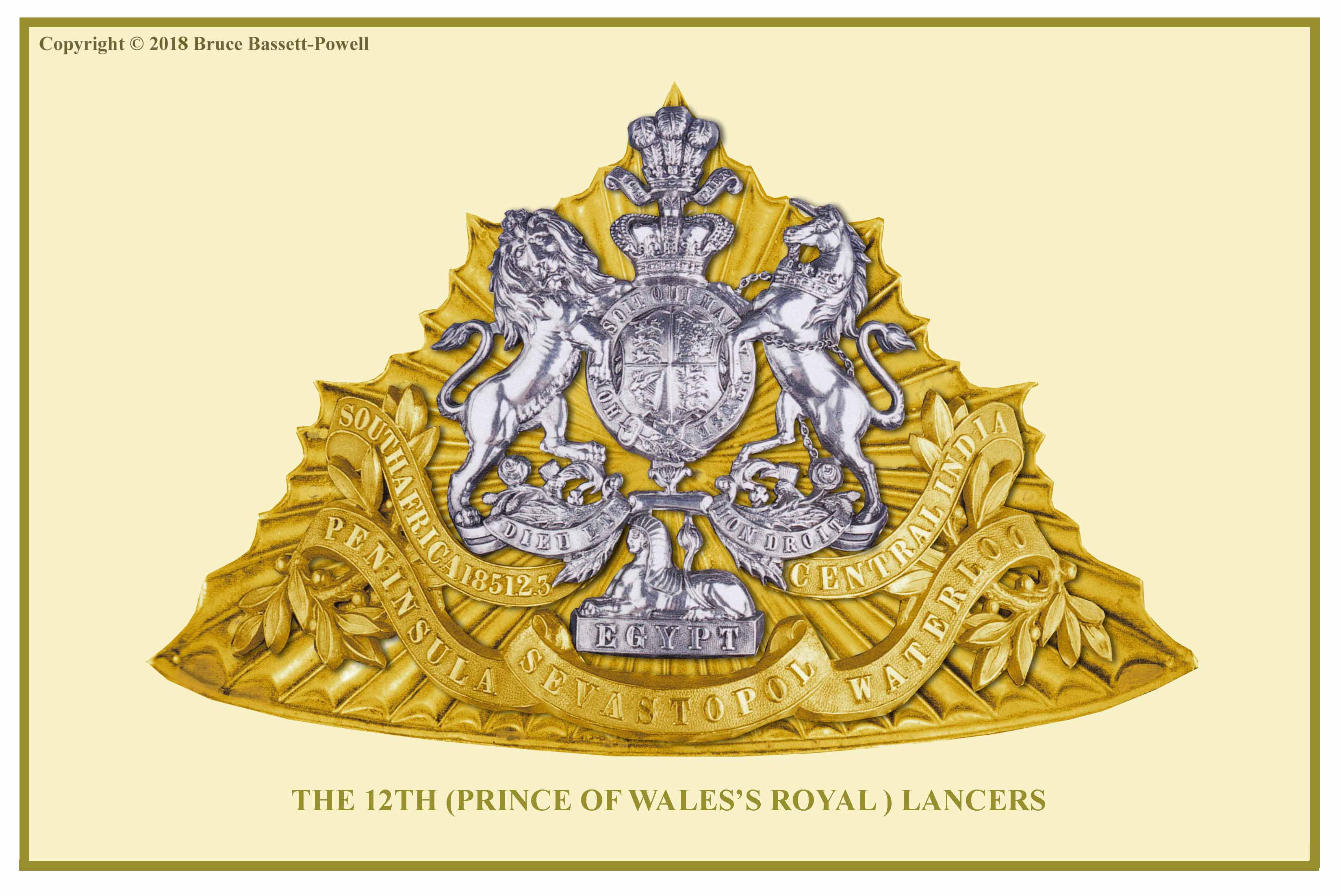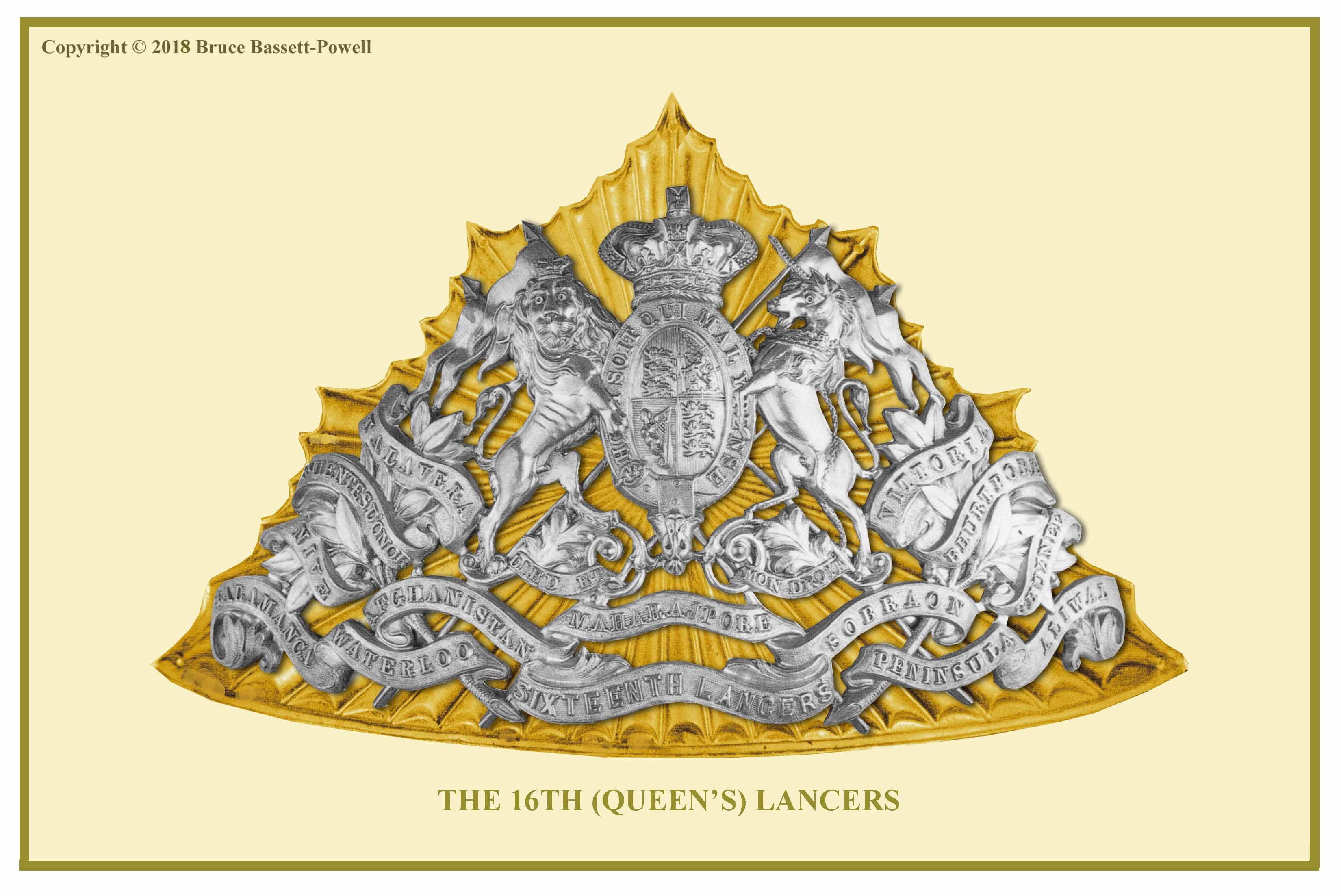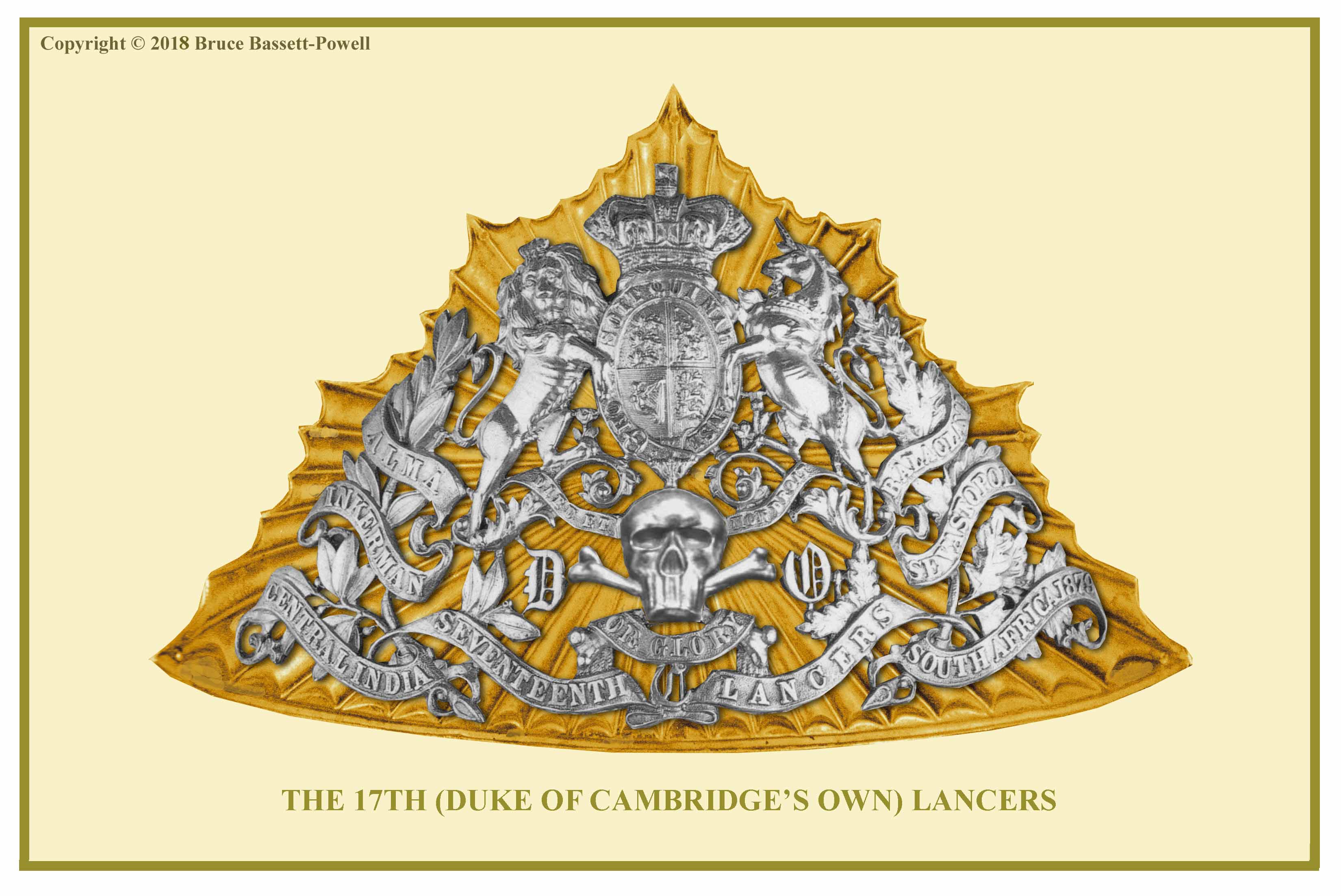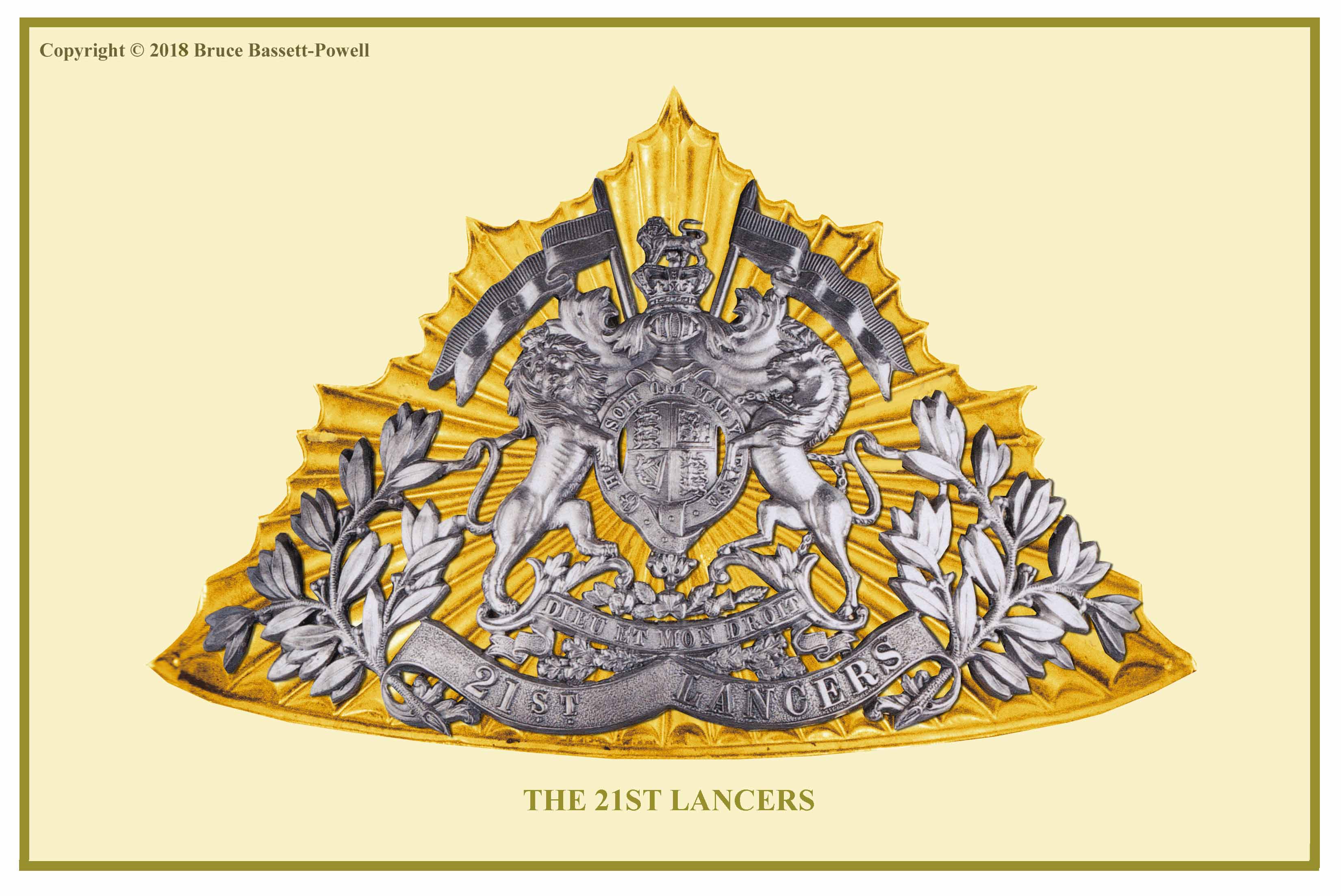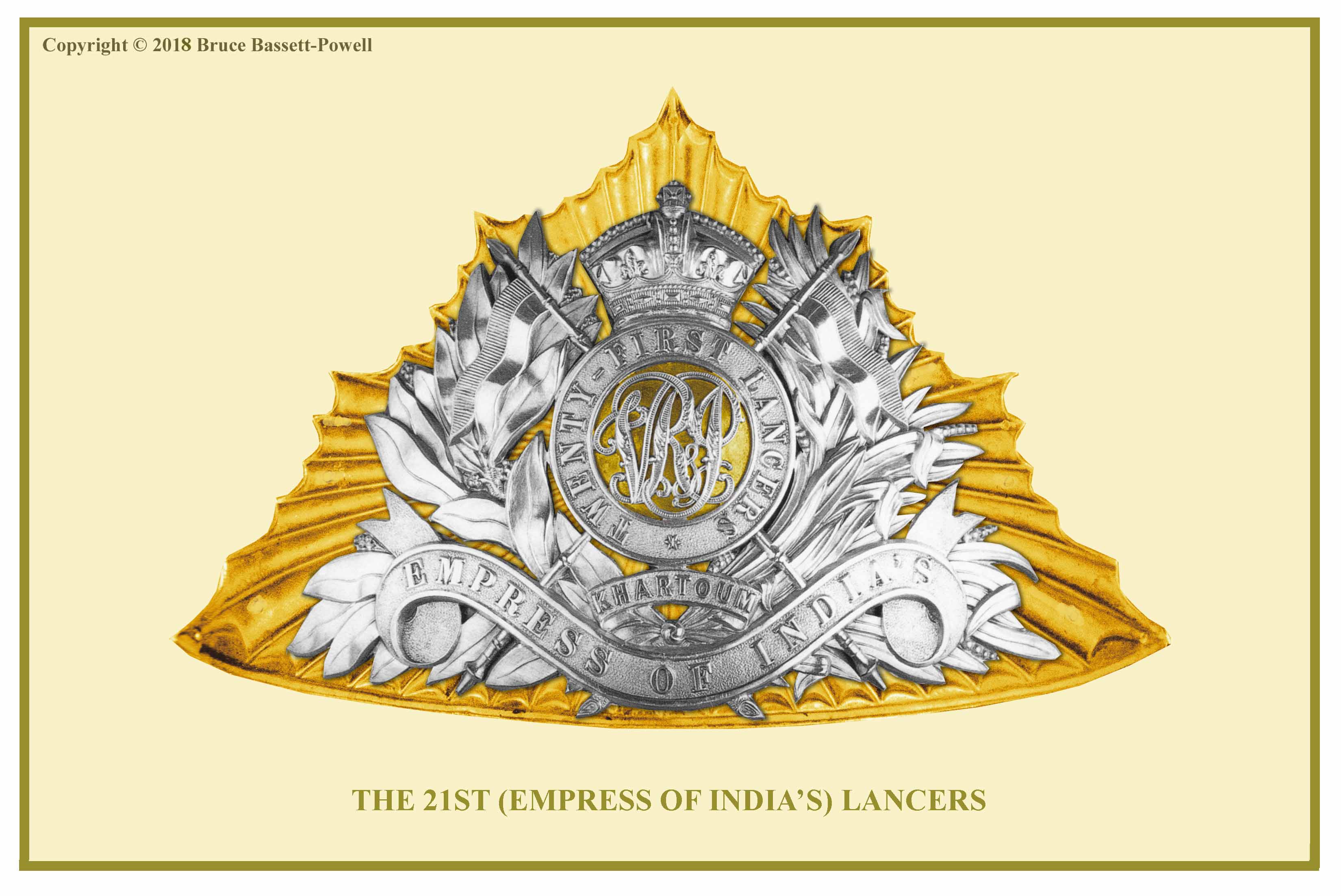UNIFORMS, ARMS & EQUIPMENT - LANCERS
LANCER CAP PLATES 1881-1902
The cap plates of the Lancer regiments were the most distinctive of all the branches of the army. The back plate was of gilt or gilding metal representing a rayed star halved. The badges, of silver and / or gilt were mounted onto the plate with pins pushed through small holes and bent back. Some badges were in several parts. Because, like all the light cavalry, Lancers no longer carried guidons, battle honours were displayed on the badges that were laid upon the back plates. When battle honours were awarded the badge was often changed. However, there is much evidence that this did not happen immediately, especially if the regiment was serving overseas. It was not unusual for several officers in a regiment to have slightly different plates.
The plates shown below represent an example for each regiment worn during the period 1881-1902. Battle honours and dates of award are for guidelines only. The Dress regulations of 1883 and 1891 did not describe the badges of Lancer Regiments but the 1900 regulations did but not in as much detail as desired.
The 5th (Royal Irish) Lancers
1n 1881 the regiment had the badge of the Royal Arms with crest above in silver. Below was the Irish Harp with a spray of shamrocks either side. In 1882 the battle honours of BLENHEIM, OUDENARDE, RAMILLIES and MALPLAQUET were awarded and appeared on the plate in 1885. SUAKIN was awarded in 1885 but did not appear on the plate until much later. The 1900 Regulations do not include Suakin. Battle honours for the DEFENCE OF LADYSMITH and SOUTH AFRICA 1899-1902 did not appear on the plate until the next reign.
The 9th (Queen’s Royal) Lancers
In gilt or gilding metal, the Royal Arms with laurel sprays on either side displaying the battle honours. Below the Arms in silver the cypher of Queen Adelaide reversed and intertwined. The battle honours PENINSULA, PUNNIAR, SOBRAON, CHILLIANWALLAH, GOOJERAT, DELHI, LUCKNOW and PUNJAUB were all awarded before 1881 and appeared on the plate at that time. Three more honours were awarded in 1885 – KABUL 1879, KANDAHAR 1880, CHARASIAH. All were added to the plate in 1890. Honours for the South African War were added during the next reign,
The 16th (Queen’s) Lancers
The Royal Arms in silver with crossed lances, pennants flying, behind. To the lower left and right, sprays of laurel. The battle honours were displayed upon the laurel leaves and in the centre below the arms. On a scroll at the bottom “SIXTEENTH LANCERS”. By 1881 the following thirteen honours had been awarded: PENINSULA, WATERLOO, BHURTPORE, MAHARAJPORE, AFGHANISTAN, GHUZNEE, ALIWAL, SOBRAON, TALAVERA, VITTORIA SALAMANCA, FUENTES D’ONOR and NIVE (the latter five honours awarded in 1848). No other battle honours were awarded before 1902.
The 12th (Prince of Wales’s Royal) Lancers
In silver, the Royal Arms with the Prince of Wales’s Feathers above. Below the Royal Arms, the Sphinx over EGYPT. The following battle honours were displayed in 1881. WATERLOO, PENINSULA, SOUTH AFRICA 1851.2.3, SEVASTOPOL and CENTRAL INDIA. No more honours were shown before the reign of Edward VII when those for the South African war were added.
The 21st (Empress of India’s) Lancers
The first pattern badge comprised of the Royal Arms in silver with full mantle and crest above. Behind two lances with pennants flying, one to the left the other to the right. Below. A spray of laurel on each side with a double scroll between with “21ST” on the left scroll and “LANCERS” on the right. In 1899 a new badge was adopted using the Imperial Crown with a circlet below inscribed “TWENTY-FIRST-LANCERS”, the VRI cypher within. On the left side a spray of laurel and on the right a spray of palm leaves. Below the circlet, a scroll with the battle honour KHARTOUM and across the bottom, a scroll inscribed “EMPRESS OF INDIA’S”. This was soon superceded by a new badge which returned to the Royal Arms (without mantle) and lances with pennants behind. Sprays of laurel to the left, palm fronds to the right. Below the arms the scroll with the battle honour KHARTOUM and below that the Imperial Cypher. At the bottom to the left of the Cypher, a scroll inscribed “21st (EMPRESS OF” and to the right a scroll with “INDIA’S) LANCERS”. The crown in the Royal Arms was changed after 1902.
The 17th (Duke of Cambridge’s) Lancers
In silver, the Royal Arms. Below the arms, the MOTTO (a Death’s Head with “OR GLORY” on a scroll below). Either side of and below the MOTTO, the Initials D C O. To the right a sprig of laurel and to the left a sprig of oak. Upon the laurel the battle honours ALMA, INKERMAN, CENTRAL INDIA. On the oak the honours BALAKLAVA, SEVASTOPOL, SOUTH AFRICA 1879. At the bottom a scroll to the left inscribed “SEVENTEENTH” and on a scroll to the right “LANCERS”.



